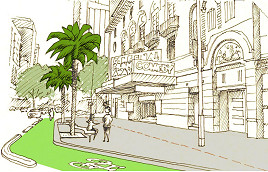Pets’ peeves of vertical living
By Janette Corcoran
2018 is an Earth Dog Year in Chinese astrology and we are all advised to pay special attention to our health – but if you actually have a four legged friend, how might their 2018 health be in your vertical village?
Pet keeping in strata communities continues to grow, reflecting the cultural importance of pet ownership in Australia. Led by a generation of baby boomers who have become empty-nesters, apparently almost 90 per cent claim their animals to be more family than pet. Also the “cats, not kids” brigade have seen pet parks become increasingly popular safe zones in which both owners and pets mingle.
However, how we treat our furry family in our vertical villages varies. In Queensland and NSW, for instance, pet ownership is subject to a wide range of bylaws, whereas in Victoria and the ACT, pets are allowed by default unless they become a “nuisance”.
Individual building protocols and pet facilities also vary widely.
Some apartment towers require pets be carried across common space (lest they mark the marble flooring). Others request residents register their pets with building management, citing the need to convey relevant bulletins (and also, possibly, to ensure that owners approve of their four-legged tenants). Some villages also have an induction package which alerts pet owners to their responsibilities to neighbours and asks them to give thought to how they will remove their pet in the event of an emergency.
Current trends are towards greater support for pets in apartments as we “age in place” and become more reliant upon our pets for company. In fact, many policy makers are including pets in their future views of high rise living as they are believed to positively impact on their human’s wellbeing by reducing loneliness and (possibly) alleviating some symptoms of depression and dementia.
Added to this, pets are claimed to strengthen our sense of community, a point agreed by Lisa Wood, associate professor at University of Western Sydney. Her cross-national study (involving Perth, Australia, and three US cities) has lent weight to the claim that pets help build social capital (i.e. trust and connections between people, including those we don’t know personally).
Also in support of pets is John Bradshaw, visiting fellow in anthrozoology, University of Bristol, who claims that pet-keeping is one of the few available outlets in today’s urbanised society that help us to reconnect with the world of nature.
It appears then that pets are good for their owners – but what about vice versa?
Are we, and in particular our high-rise lifestyle, good for our pets?
According to RMIT researchers Yolande Strengers, Cecily Maller and Larissa Nicholls, there are some concerns for high-rise pets, starting with the temperatures within our apartments. As noted in a previous SkyPad Living column, a University of Melbourne study found that heat stress inside apartments is a major issue for residents – and this includes our pets as they, too, are susceptible to overheating.
Some real thought is needed to ensure that pets have a suitable environment, especially when owners are away. For some, this means leaving on the air conditioning, which can contribute significantly to energy bills.
And this is just one pet health concern.
Dr Jo Righetti from Pet Problems Solved has identified several more challenges including your pet’s mental health – what are they going to do all day when their human is away?
But marketing, like nature, abhors a vacuum – and so, in this time of “premiumisation of pets”, there are a wave of pet-friendly services and innovations that I have come across.
For instance, previously owners might have left on the radio for their pet (along with the air-conditioning!). However, now there is DOGTV, a live stream channel that “provides the right company for dogs when left home alone”. Apparently, DOGTV helps stimulate, entertain, relax and habituate dogs with TV shows that introduce them to various movements, sounds, objects, experiences and behaviour patterns, all from a dog’s perspective.
But too much TV could make too much Fido.
So, rather than simply leaving toys around, there is digital day care with Camp PetChatz which makes “chatting with your pet easy!” Apparently it is as “easy” as pressing the chat button and your dog or cat will see your smiling face on the full-colour LED display.
But wait – of course there’s more!
By clicking the treat button, you can give your pet a healthy reward – and naturally you can record and share all these precious moments!
And just to give you choice, there is also Petcube Bites – an all-in-one Wi-Fi pet camera with built-in treat dispenser that lets you train and reward your pet remotely. See, talk, treat, and train from your phone!
But if you are more old-school, there is a local offering called Dogshare which introduces dog-owners to other dog-lovers in their neighbourhood. Dogshare, which is free to join, aims to connect time-poor dog owners with fellow dog lovers – and, to my mind, there seems potential to add a vertical village twist to this service by developing a building-based group and including this information in the building’s induction program.
But if the demands of vertical pet ownership seem all too great, there are an array of virtual pets – but before you head down this simulated path, you might like to view Strange Beasts, a short film from London filmmaker Magali Barbé.
If you would like links to the material mentioned, please visit and like SkyPad Living on Facebook.

Council endorses office tower at Flinders Lane despite querying car park demolition



 Download the Latest Edition
Download the Latest Edition